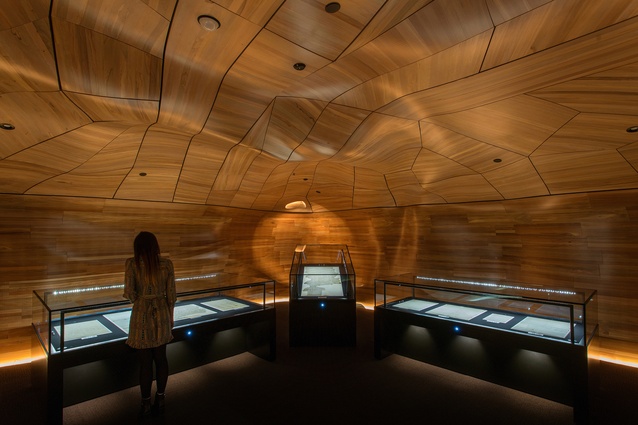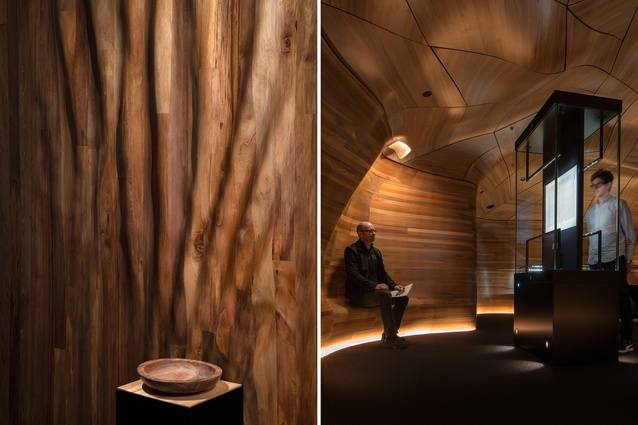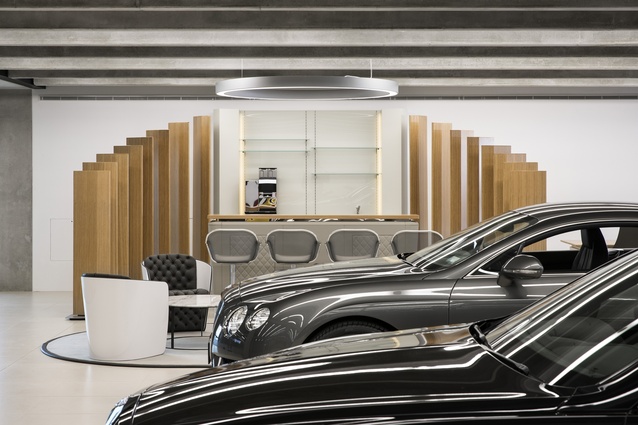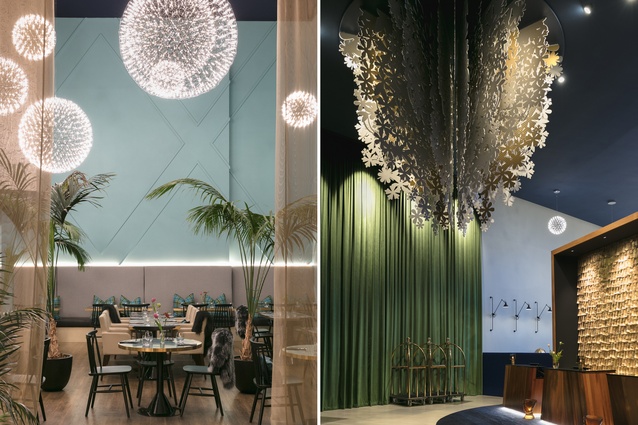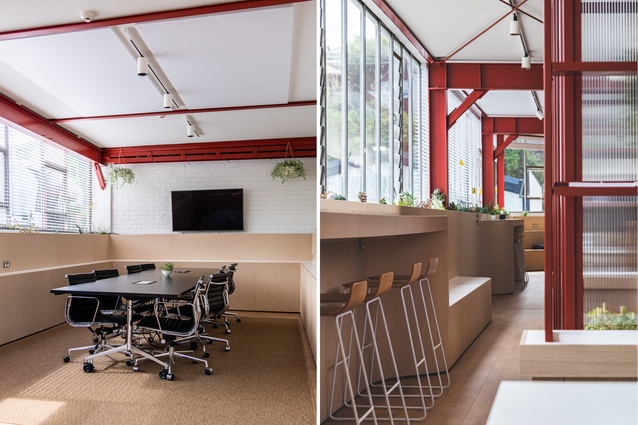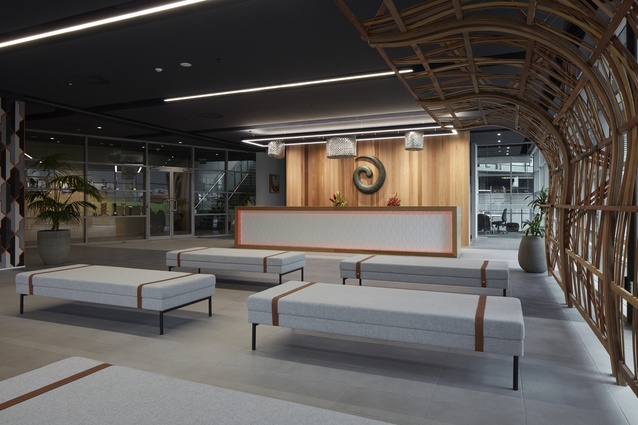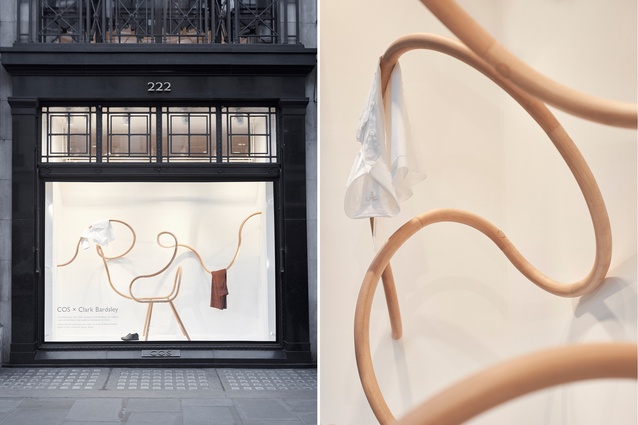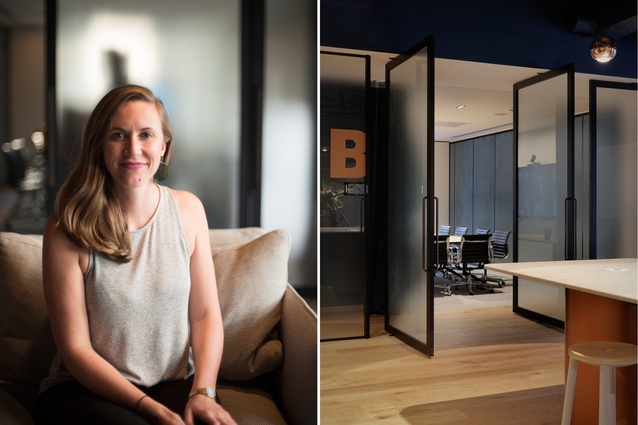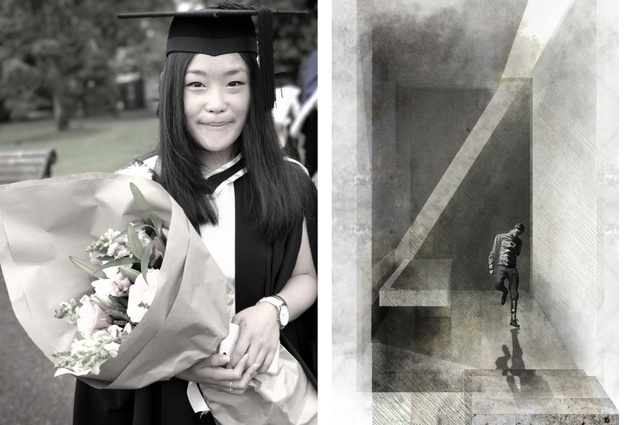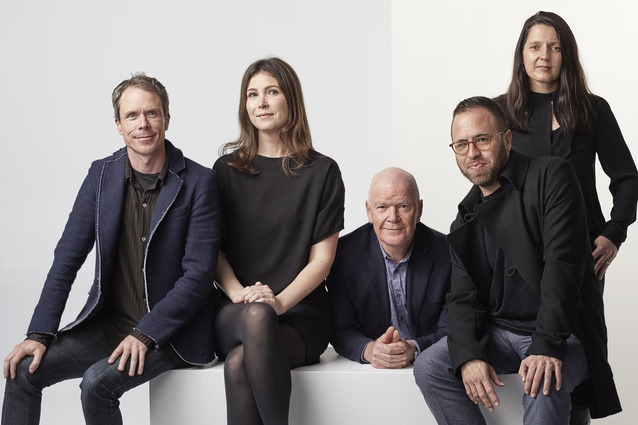Winners announced: 2018 Interior Awards
Winners of each of the 2018 Interior Awards’ nine categories were announced on 21 June at a sold out gala event at St Matthew-in-the-City in Auckland. Judges, sponsors, architects and interior designers alike gathered for a celebration of New Zealand’s top commercial interiors.
This year’s programme received an unprecedented number of entries, making the jury’s job particularly difficult. Two categories, Workplace up to 1,000m2 and Civic, saw such remarkable entries that the judges were forced to name four finalists for the first time, instead of the standard three.
Jury convenor and editor of Interior magazine Federico Monsalve said, “There were some big recurring themes this year – wabi-sabi, remembrance and quietude – but perhaps most noticeable among them was Māoridom. Many large and small projects throughout the country seemed to be infusing their designs with deep and rich traditional narratives as well as spatial solutions that take into account Māori ways of utilising space. Long may this last!”
See the list of winners below with jury citations:
SUPREME, CRAFTSMANSHIP & CIVIC AWARD
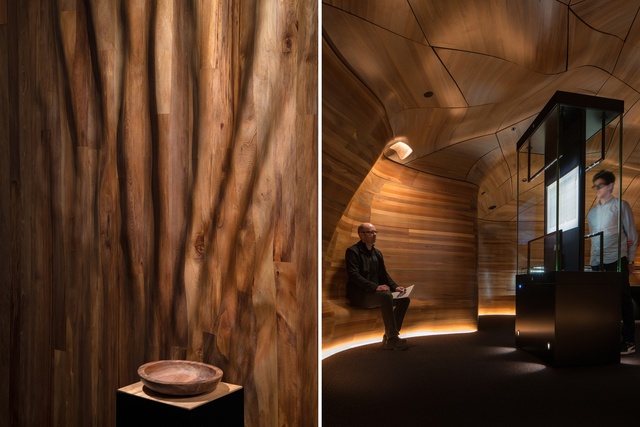
The He Tohu Document Room – He whakapapa kōrero, he whenua kura by Studio Pacific Architecture took home a whopping three awards this year, winning the Craftsmanship and Civic categories, as well as the Supreme Award. The room, located in the National Library in Wellington, houses New Zealand’s most influential documents. The design for this room of such gravity is striking, emotionally and physically.
This project was a standout from the start and received the highest scores, unanimously, in both the Civic and Craftsmanship categories. The judges highlighted the ripples carved in to the room’s façade and a strip of pounamu at the room’s entrance – both representing symbols of the nation’s history.
“On and on, the architectural and spatial gems continue throughout this interior, making He Tohu a very well-considered space that neutrally but emotively overlays two people’s histories as they meet in one place,” the jury commented.
RETAIL AWARD
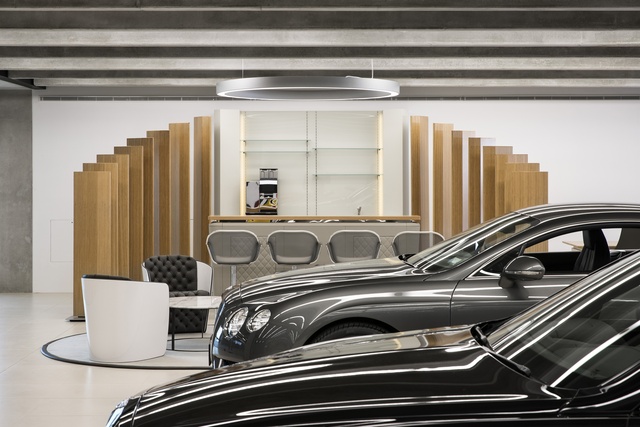
Warren and Mahoney Architects took home the award in the Retail category for 119 Great North Road – a car dealership that makes its own rules. The judges loved this project because it “responds with flair to difficult and rather unique challenges”.
A true celebration of the engineering behind the world’s most luxurious car brands and a feat in displaying those cars to a New Zealand market, the space includes corporate offices, a mechanic’s workshop and an opulent showroom all under one roof. The jury said the space is “a visually striking interior that, regardless of its many stakeholders, engineering requirements and size limitations, delivers beauty and functionality while offering truly new and context-driven solutions”.
HOSPITALITY AWARD
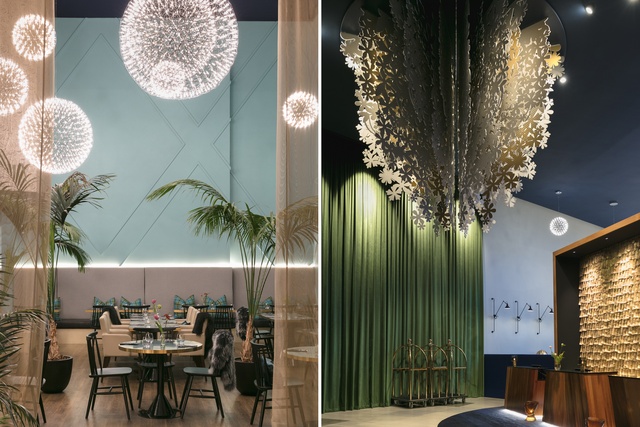
Nearly every space in the Naumi Auckland Airport hotel by Material Creative with Muir Design Solutions packs a punch. These moves won them this year’s Hospitality Award. Colour, texture and pattern are used artfully from room to reception to restaurant.
“This project benefits tremendously from several bespoke pieces, inspired or designed by local artists,” the jury said. “This is a playful, unexpected, sensory experience that merits an accolade as much for the end product as for the daring spirit that conceived it.”
WORKPLACE (UP TO 1,000M2) AWARD
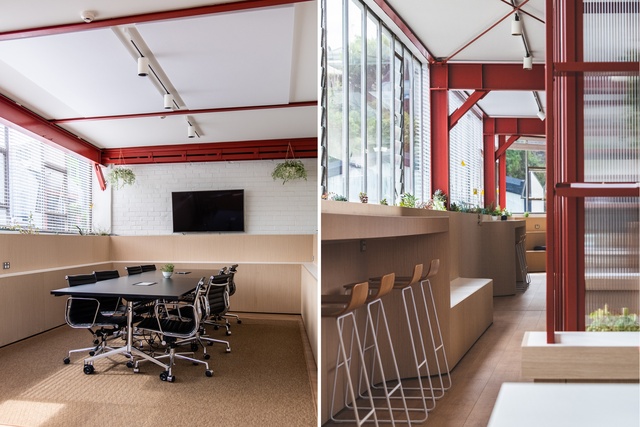
The award for Workplace up to 1,000m2 went to OPL for its design of the Crimson Education Office in Newmarket. The jury was impressed with several of the designer’s choices including the perimeter-lining, ribbon-like piece that adds a sculptural element, the unique meeting pods and the use of clever, functional pieces.
They noted, “This office uses a delicate balance of hard and warm materials, muted and strong colours, simplicity and movement to represent an equally vibrant millennial and Gen Z workforce.”
WORKPLACE (OVER 1,000M2) AWARD
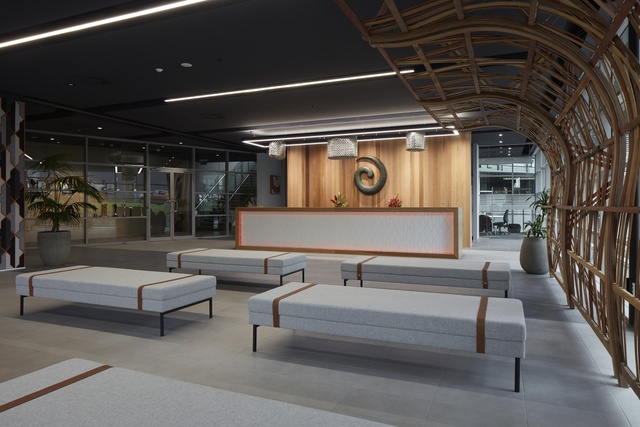
RCG‘s design for the Māori Television offices was selected as the Workplace over 1,000m2 winner this year. The jury commented, “The designers began thinking about this workplace by using the steps of the pōwhiri and extrapolating that across their spatial analysis. The result is a work environment that seems to understand that cultural standpoint and the ways in which it can set it apart from traditional workplaces.”
The judges commended the use of traditional Māori patterns as functional elements throughout the interior. They said, “Of note is its usage of artworks … and images of navigation tools to intersperse a deep cultural narrative further within the workplace.”
INSTALLATION AWARD
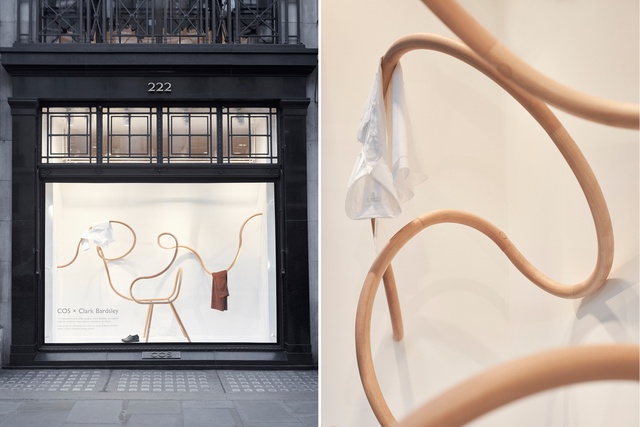
This year’s Installation Award went to COS x Clark Bardsley, a creation by Clark Bardsley Design. British fashion brand COS commissioned this work from Bardsley after he created an experimental piece in 2013 that gently poked fun at the design industry’s obsession with chairs. Bardsley’s original sketch was made into a whimsical, three-dimensional, steam-bent ‘chair’ made out of four modular pieces that could be flat-packed and re-installed in a variety of doodle shapes.
“Its strength is in its simplicity and the high level of design communication that allowed it to be manufactured and installed (in London, Hong Kong and, soon, in Melbourne) without the designer being present. A quirky, impeccably devised folly,” the jury said.
EMERGING DESIGN PROFESSIONAL AWARD
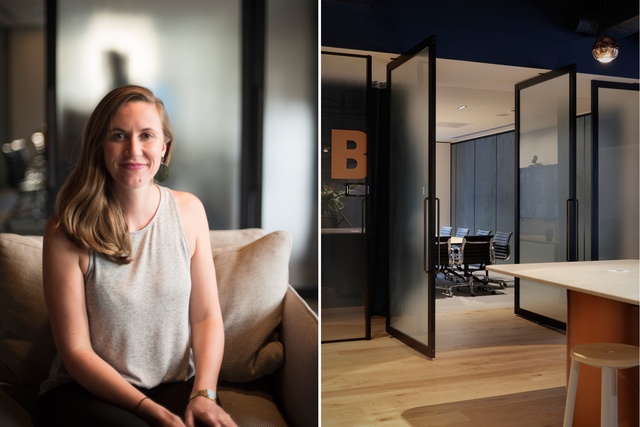
Lauren Hickling of Warren and Mahoney Architects was honoured as this year’s Emerging Design Professional. The jury noted, “As a finalist in the Student category of these awards back in 2015, Lauren Hickling expressed very defined philosophies of design that included the need for curiosity and an understanding of ritual within interiors. This year, as an Emerging Design Professional entrant, Hickling proved that her early ethos has not just endured but matured and peppered some of the work she has been doing.”
Lauren has recently worked on the offices of Russel McVeagh in Auckland and was lead designer for the Kiwi Property fitout. “Hickling mixes continuity with flexibility and a clarity of design communication that foretells a promising future in the industry,” the jury said.
STUDENT AWARD
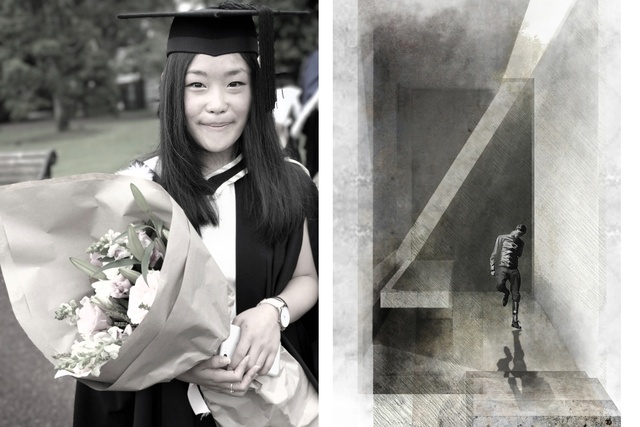
The University of Auckland’s Annie Tong took the award in the Student category this year for her project, Museum of Lost Memories. Annie’s project explores the architectural embodiment of silence; the judges describe it as “a poetic contemplation of stillness through void-making”.
“Through a series of spaces and curated experiences – involving natural light, conceptual materials, choreography and remembrance – Annie Tong crafts stillness in the middle of a busy central city.”
Extended coverage and full jury citations for all of the winners can be found in the June 2018 issue of Interior magazine.
With thanks to our 2018 sponsors:


